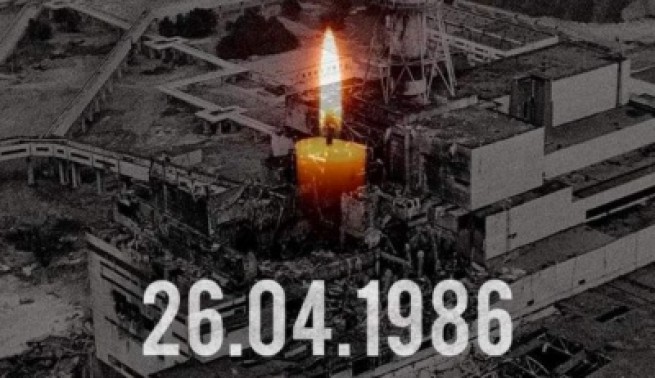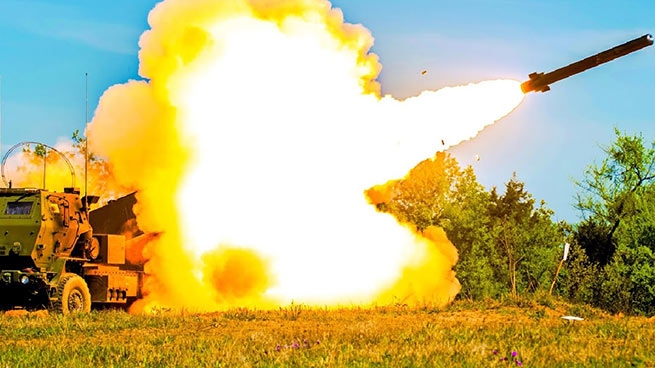For all the time that the conflict in Ukraine continues, the Joe Biden administration has not formulated what the purpose of its intervention in the situation is, and what result it expects, writes retired US Army Lieutenant Colonel Daniel Davis in an article for 19FortyFive.
This also applies to statements about agreeing on a price ceiling for the sale of Russian oil, which could result in a sharp rise in fuel prices, the former military emphasizes.
The only goal voiced by the Biden national security team since the start of the conflict has been to see Russia “weakened.”
“And yet, if the White House does not know what a weakened Russia looks like, how will it know if its actions are contributing to a successful outcome that benefits America?” — asks the author of the article.
In fact, in Ukraine, the United States continues the same aimless and incompetent foreign policy that it has pursued for decades in other countries, including Iraq, Afghanistan, Syria and Libya. The cost to the United States of all these failures was enormous, Davis recalls.
Does America have a goal or strategy for Ukraine? On Friday, Treasury Secretary Janet Yellen announced that the G7 countries had agreed to impose a price cap on Russian oil. Like most other US and European actions related to Russia’s unjust war against Ukraine, the announcement of the restriction was rich in rhetorical frills, but did not contain any evidence of a coherent strategic goal.
The purpose of the cap is to set the world price just above Russia’s marginal cost so that Moscow does not profit from the sale of oil, but high enough that Russia does not stop production completely. Current global demand cannot be met without Russia’s nearly nine million barrels of oil a day, and if Putin were to abruptly stop production, the resulting supply shock could send the price of oil into the stratosphere.
The purpose of the restriction, according to Yellen, would be to “deal a serious blow to Russian finances and at the same time hinder Russia’s ability to wage an unprovoked war in Ukraine and accelerate the deterioration of the Russian economy.” It remains to be seen whether the G7 will be able to fulfill its ambition to truly develop and implement a worldwide price cap scheme. But along with other actions sponsored or supported by the US government, it is far from clear what end result Washington hopes to achieve.
On February 7, about three weeks before Putin ordered the Russian military to invade his smaller neighbor, President Biden threatened to “impose the toughest sanctions ever imposed” in the event of a Russian invasion. Four days later, National Security Adviser Jake Sullivan explained that President Biden “believes that sanctions are designed to deter. And in order for them to work – to deter, they must be set in such a way that if Putin starts to act, it will entail is an expense.”
However, after threats of sanctions failed to deter Putin, Biden adjusted the rationale, saying that “no one really expected the sanctions to prevent anything.” Instead, he continued, the sanctions were intended to demonstrate the “determination” of the West, which over time “will lead to significant costs for him (Putin)”. Even with this new assertion about his rationale for the sanctions, there was no explanation as to what these “significant costs” were intended for. Unfortunately, the administration’s lack of attention didn’t end there.
In late April, Defense and Homeland Security Secretary Lloyd Austin and Anthony Blinken traveled to Kyiv to meet with Ukrainian President Volodymyr Zelensky to explore ways the US could help the Ukrainian military. After the meeting, Austin said that the United States wanted Ukraine to remain a “sovereign country” and that the US wanted to “see Russia weakened to the point where it couldn’t do the kind of things it did by invading Ukraine.” Yet precisely what Austin, Blinken, and Biden did not say illustrates a recurring problem in American foreign policy.
To date, no top American leader has said how our support for Kyiv should lead to the desired results. No one has articulated what a “weakened” Russia looks like or how we’ll know when that standard is reached – or even why weakening Russia is a vital US interest worth taking huge risks. These are not just academic questions or issues requiring attention. They are of fundamental importance. That’s why:
Even before the start of the war, the United States had no vision of the end state it wanted to reach. For example, if Biden’s goal prior to Feb. 24 was indeed to deter Russia from starting a war, then it should have been clear beyond any doubt that the threat of sanctions alone would not be enough to convince Putin not to invade.
Washington had to engage in aggressive diplomatic negotiations with both Kyiv and Moscow in order to use the full power of American power to find ways to prevent war. There is no evidence that the US made serious diplomatic efforts to prevent war. Without a clearly articulated goal, the various departments of the administration had little guidance to achieve the desired result. The result was predictable: policy failure.
Pretty much the only goal voiced by anyone on the Biden national security team since the start of the war was Austin’s aforementioned desire to see Russia “weakened.” But if the White House doesn’t know what a weakened Russia looks like, how will it know if its actions are conducive to a successful outcome beneficial to America? That is the position we are in right now.
We are sending Ukraine multiple tranches of multi-billion dollar support, including modern and obsolete equipment, but this is not a coherent set of military assets tied to building a certain capacity in the Ukrainian armed forces. The White House maintains numerous tranches of sanctions against Russia, but there is no declared goal of what they should give.
Because we don’t know what we’re trying to achieve, no one can tell the American people how much the effort will cost, how long it will take, or even what success will look like. If this sounds familiar, then it should be: in fact, this is the same aimless, incompetent foreign policy that the United States has pursued for decades.
-We fought a generational war in Afghanistan, in which we never bothered to set a goal; no one in power even articulated what success should look like, and thus no victory was achieved;
-We started the war in Iraq in 2003, which quasi-ended in 2011, and came back again in 2014 – without any president bothering to set an achievable military goal, or even articulate what the forces were for, so that the American people could know when the operation could successfully complete – and it continues without success and end to this day.
We have faced the same problem in our operations in Syria, Libya, Somalia, Niger and many other places in Africa: the government has not identified any achievable military goals that would benefit our country and signal the end of the mission – and therefore none of these have not benefited the US, and most are still unsuccessfully pursued.
All these failures have cost the United States dearly – and now we are creating a new mission with no clear purpose and no identifiable end result. The war between Russia and Ukraine has just crossed a six-month milestone. The danger is not so much that six years from now we will still be trying to figure out the administration’s goals – although such a sad outcome is quite possible – but that this war may one day spill over Ukraine’s borders and drag us into a war that we will never should not have begun and from which we can never profit.
Daniel L. Davis is a senior fellow at Defense Priorities and a former lieutenant colonel in the US Army who saw action four times. He is the author of The Eleventh Hour in America 2020.
Follow him @DanielLDavis1.
The opinion of the author may not coincide with the opinion of the editors







More Stories
Today the world remembers the accident at the Chernobyl nuclear power plant
Poll: which European countries are ready to defend their homeland to the last
K. Mitsotakis announced readiness for the fire season